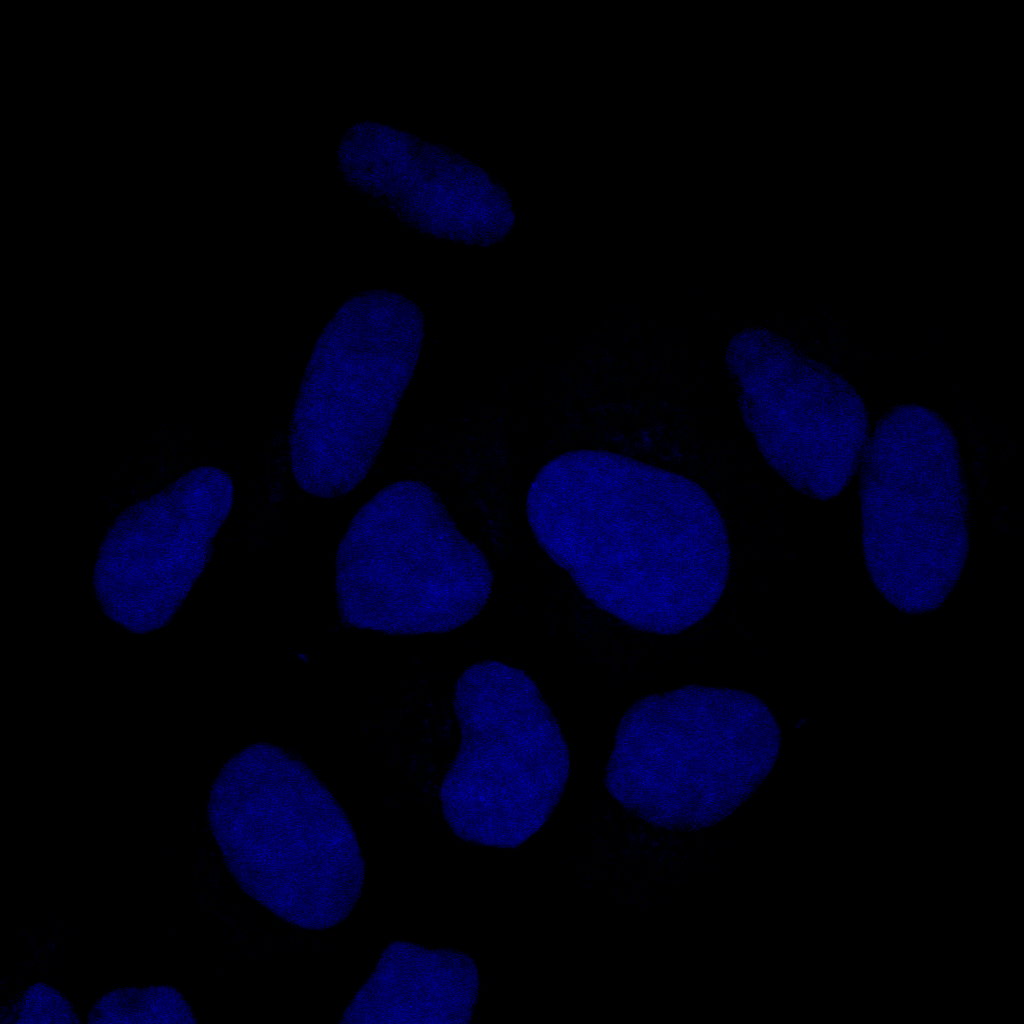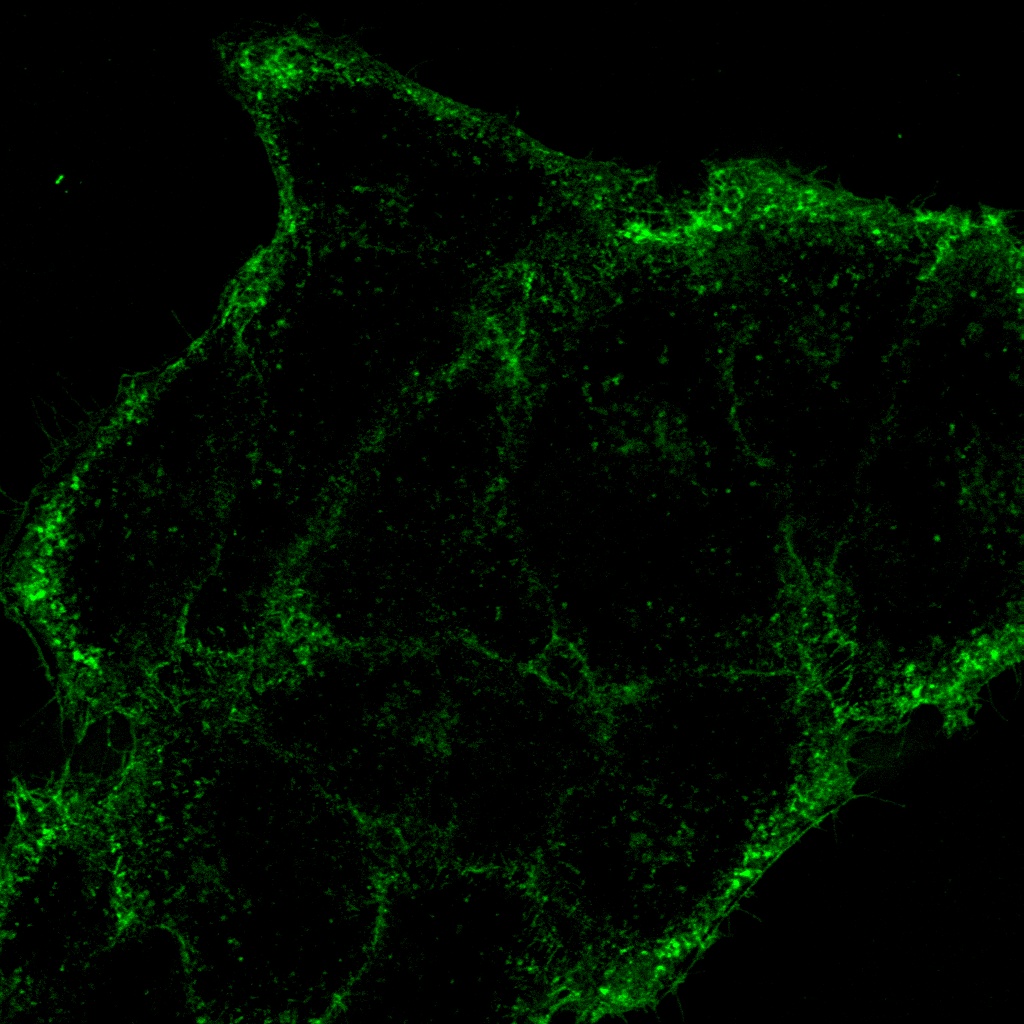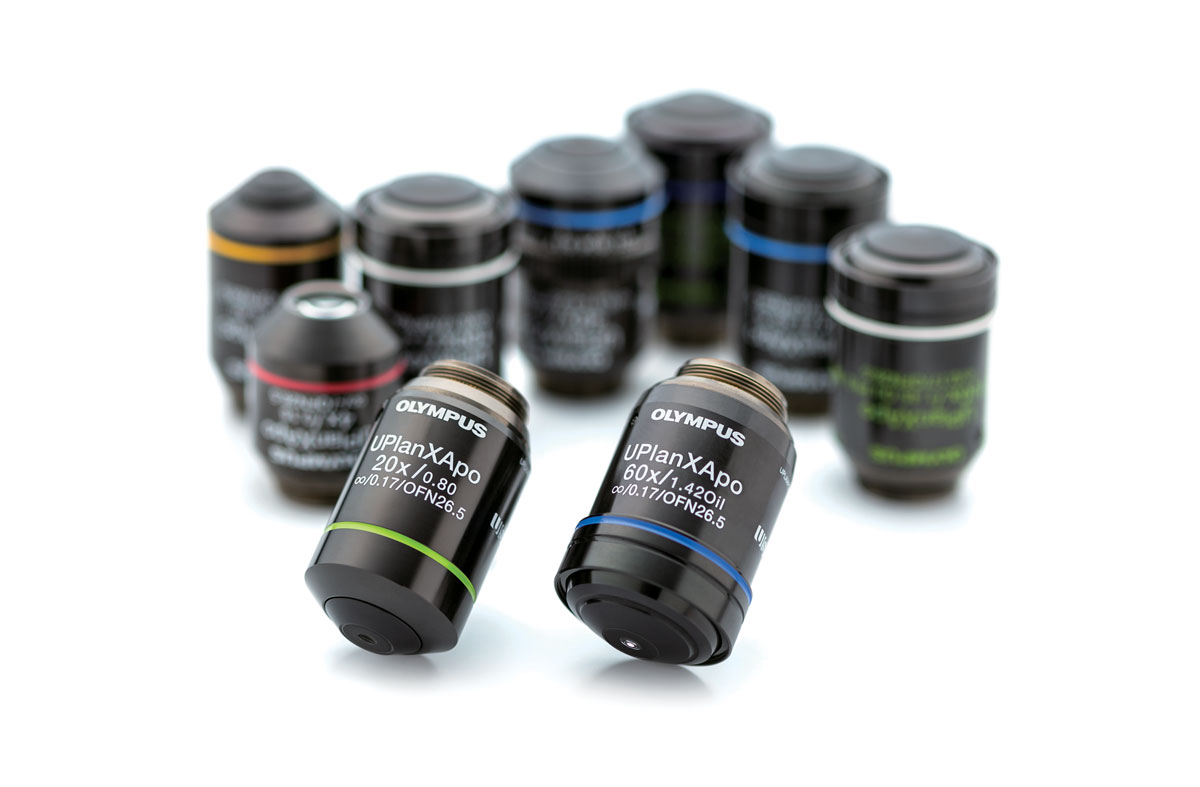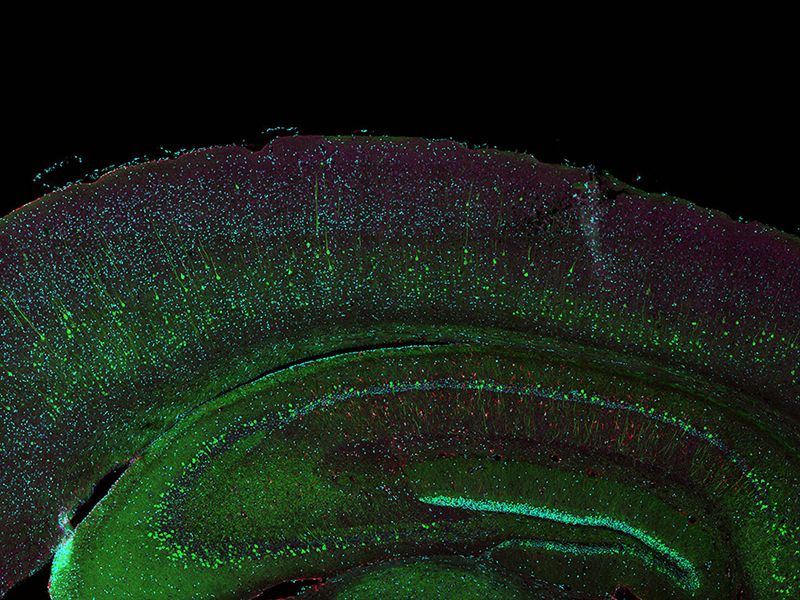FV4000
See Further with NIR-Enabled Confocal MicroscopyThe system’s enhanced technologies provided expanded multiplexing to see more in one image. NIR imaging offers greater multiplexing capabilities by extending the excitation (λ_Ex) and detection (λ_Em) spectral profile of the FV4000 system. This enables additional dyes to be used to help minimize emission signal overlapping.
|
High-Quality Optics for Efficient NIR Fluorescence ImagingThe FV4000 system's optical elements have a high transmission from 400 nm to 1300 nm, including the galvanometer and resonant scanner, which are coated in silver rather than aluminum. Our award-winning X Line™ objectives are corrected for chromatic aberrations between 400–1000 nm. They also have a higher numerical aperture, excellent flatness, and very high transmittance from UV to NIR, increasing the multiplexing capabilities. For improved colocalization reliability, our specialized A Line™ (PLAPON60XOSC2) oil immersion objective (ne~1.40) significantly minimizes chromatic aberration for strict colocalization analysis. |
|
A total of 77 four-channel XYZ positions (11 × 7) were acquired using a 1K resonant scanner within 16 minutes to create the stitched image, which used to require 2 hours using a galvanometer scanner. The coronal section of an H-line mouse brain, cyan; DAPI (cell nuclei), green; YFP (neuron), yellow; Cy3 astrocytes, magenta; AlexaFluor 750 (microtubule). Sample courtesy of: Takako Kogure and Atsushi Miyawaki, Cell Function Dynamics, RIKEN CBS. | High-Quality Confocal Images at High SpeedA unique combination of advanced technologies delivers high-quality images faster than conventional laser scanning microscope systems.
|
|---|
Simple, Precise Super Resolution ImagingCapture super resolution images using the FV4000 microscope with no dedicated hardware.
|
High-Resolution 3D Images in Thick Samples | |
Related VideosHeLa cell spheroid labeled by DAPI (cyan, cell nuclei) and AlexaFluor790 (magenta, Ki-67). Imaging of the spheroid’s whole volume was possible by NIR 785 nm, although only surface area cell nuclei observation was possible using a 405 nm laser. | When imaging thicker samples, the FV4000 microscope enables you to capture high-resolution, 3D images.
|
Precise Dynamics of Live Cells with Less Damage
|
Clear Images at DepthUse our silicone immersion objectives with the FV4000 microscope and achieve clear images of features and structures deep within your sample. Silicone oil has a refractive index close to that of live cells or tissue, greatly reducing the spherical aberration as compared to air, water, or other oils. With less aberration, you can achieve clearer images of your sample at depth. And silicone immersion oil does not dry out at 37 ℃ (98.6 °F), making it effective for long-term time-lapse imaging. | Related Videos |
Need assistance? |
Sorry, this page is not
available in your country.










